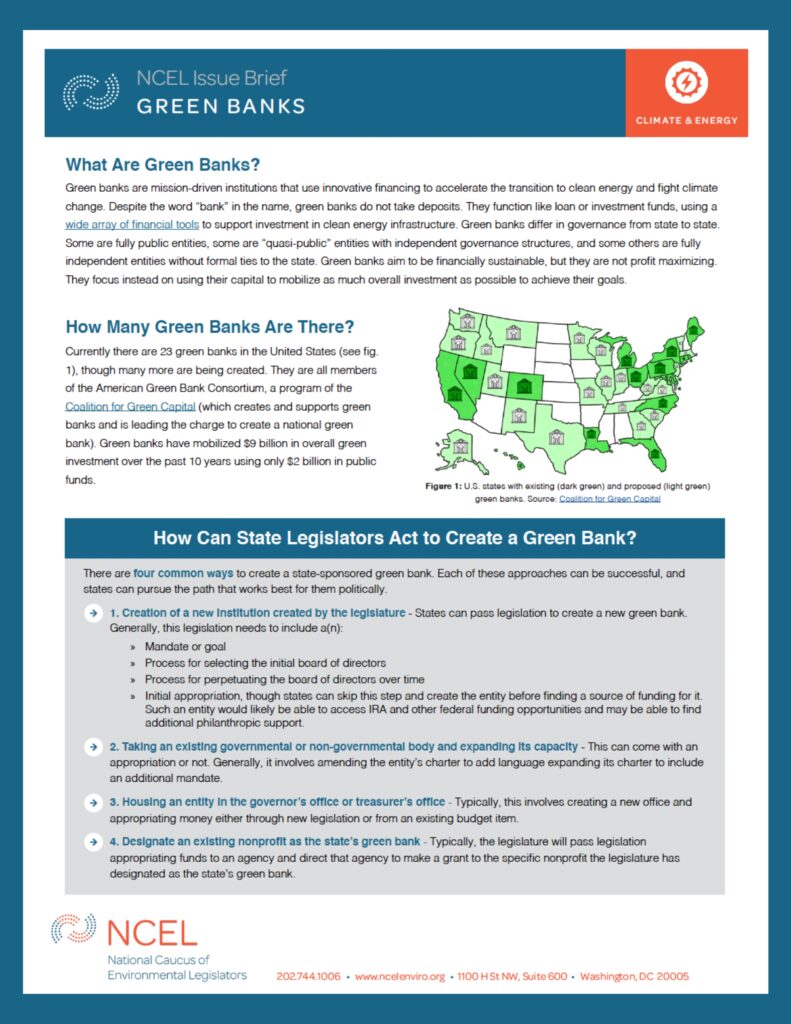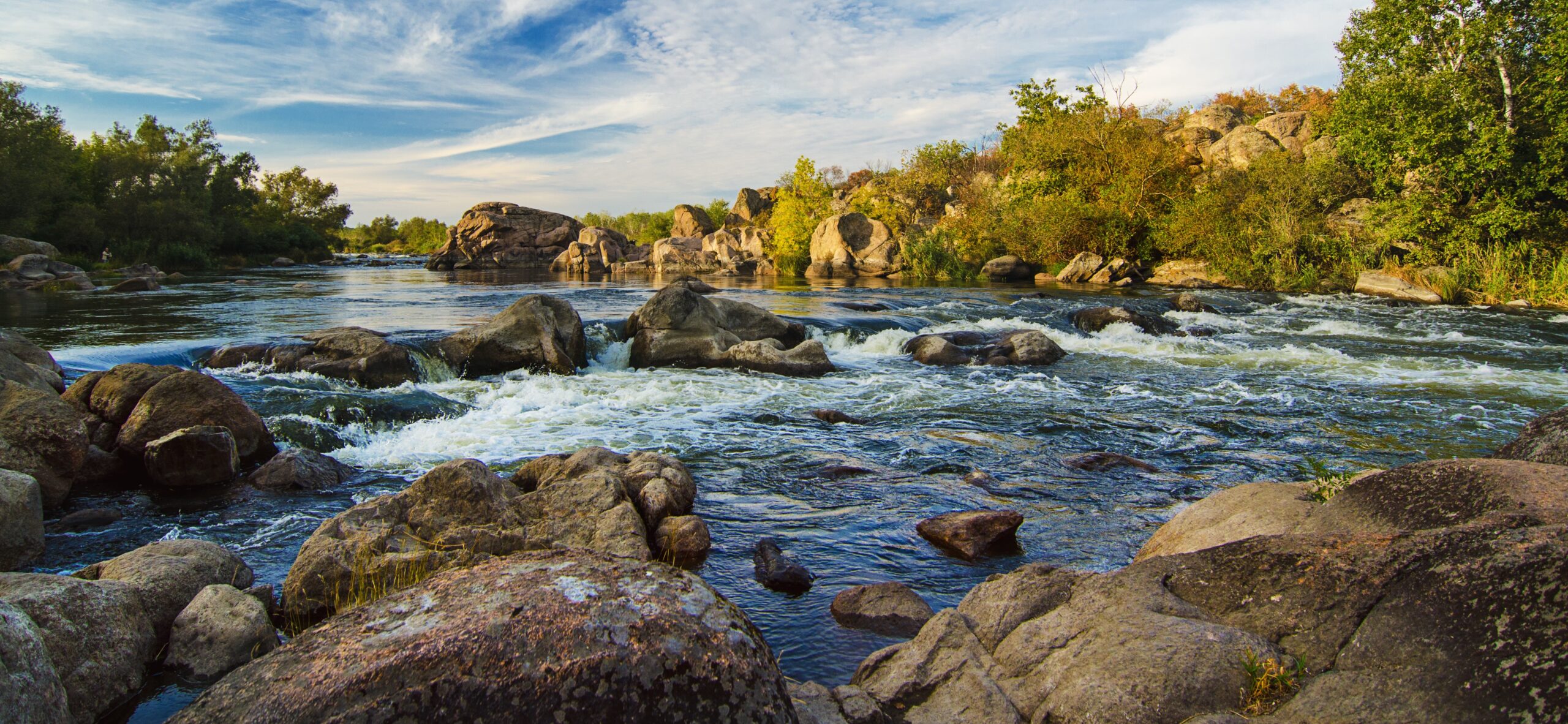
Issue Brief
Green Banks
Overview
This Issue Brief is intended to give an overview of green banks as tools to accelerate the transition to clean energy and fight climate change. The full Issue Brief includes a green banks overview section, steps state lawmakers can take to create a green bank, sample state green bank legislation, and additional resources.

What are Green Banks?
Green banks are mission-driven institutions that use innovative financing to accelerate the transition to clean energy and fight climate change. Despite the word “bank” in the name, green banks do not take deposits. They function like loan or investment funds, using a wide array of financial tools to support investment in clean energy infrastructure. Green banks differ in governance from state to state. Some are fully public entities, some are “quasi-public” entities with independent governance structures, and some others are fully independent entities without formal ties to the state. Green banks aim to be financially sustainable, but they are not profit maximizing. They focus instead on using their capital to mobilize as much overall investment as possible to achieve their goals.
How Many Green Banks Are There?
Currently there are 23 green banks in the United States, though many more are being created. They are all members of the American Green Bank Consortium, a program of the Coalition for Green Capital (which creates and supports green banks and is leading the charge to create a national green bank). Green banks have mobilized $9 billion in overall green investment over the past 10 years using only $2 billion in public funds.
How Can State Legislators Act to Create a Green Bank?
- Creation of a new institution by the legislature – States can pass legislation to create a new green bank
- Taking an existing governmental or non-gonvernmental body and expanding its capacity – This can come with an appropriation or not. Generally, it involves amending the entity’s charter to add language expanding its charter to include an additional mandate.
- Housing an entity in the governor’s office or treasurer’s office – Typically, this involves creating a new office and appropriating money either through new legislation or from an existing budget item.
- Designate an existing nonprofit as the state’s green bank – Typically, the legislature will pass legislation appropriating funds to an agency and direct that agency to make a grant to the specific nonprofit the legislature has designated as the state’s green bank.
Green Bank Legislation
- **Nevada S.B.407 (2017): Established an independent, nonprofit corporation called the Nevada Clean Energy Fund (NCEF) to help finance clean energy projects in Nevada. SB 407 also created the Board of Directors and set forth the duties of the Board.
- Colorado S.B.21-230 (2021): Directed the state treasurer to make an immediate, one-time transfer of $40 million from the general fund to the energy fund administered by the Colorado energy office (CEO). The legislation instructs the CEO to make a grant to the Colorado Clean Energy Fund (Colorado’s green bank) of $30 million.
- Illinois S.B.2408 (2021): Designated the Illinois Finance Authority as the “Climate Bank” to aid in all respects with providing financial assistance, programs, and products to finance and otherwise develop and implement equitable clean energy opportunities in the State.

Empower State Environmental Champions
Your donation funds the fight for equitable actions that protect the environment and our health.
Donate